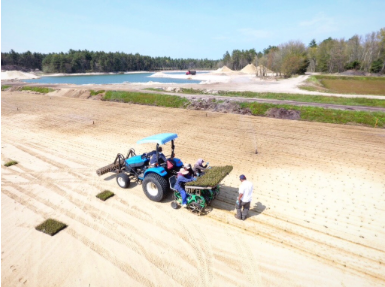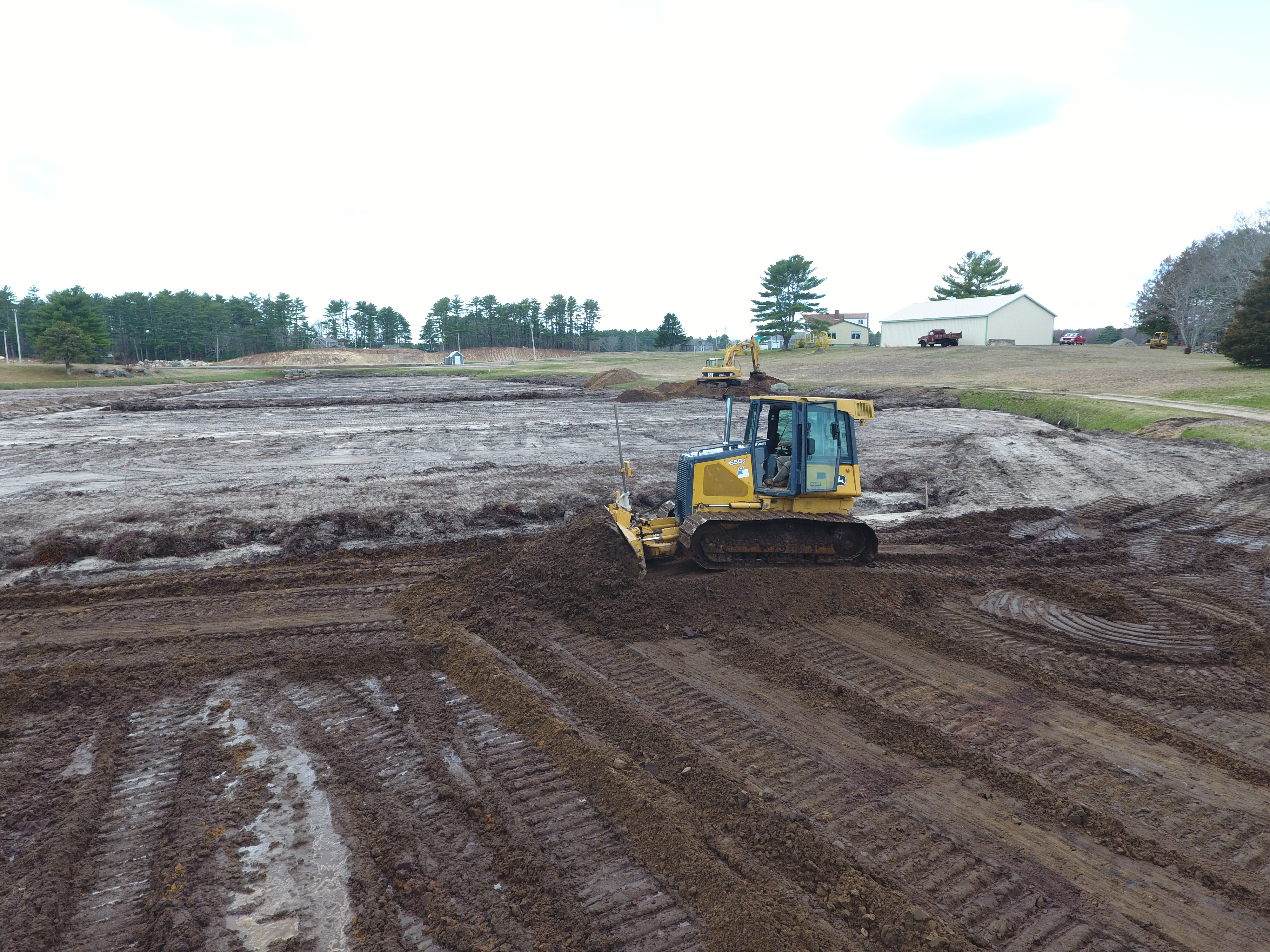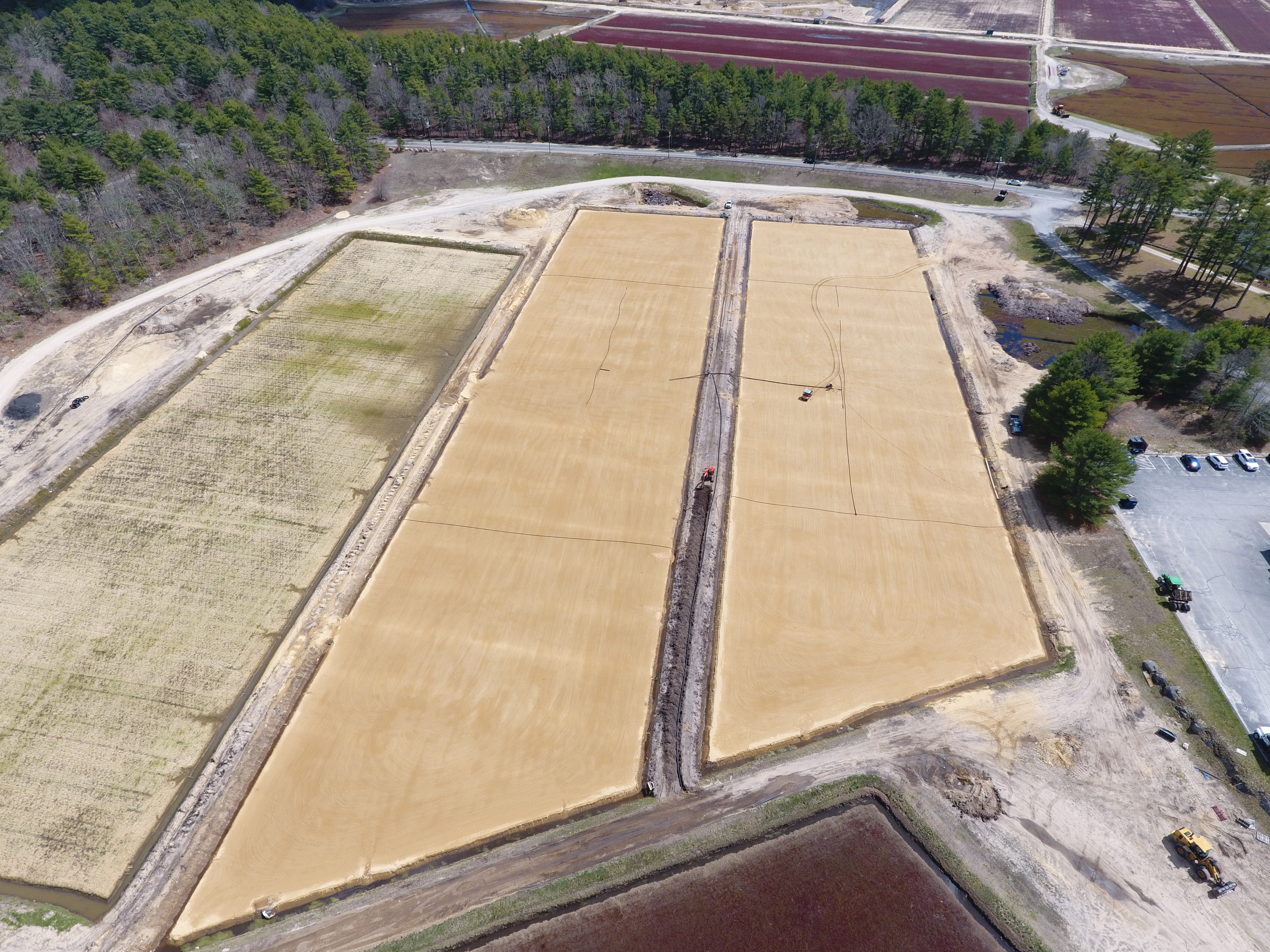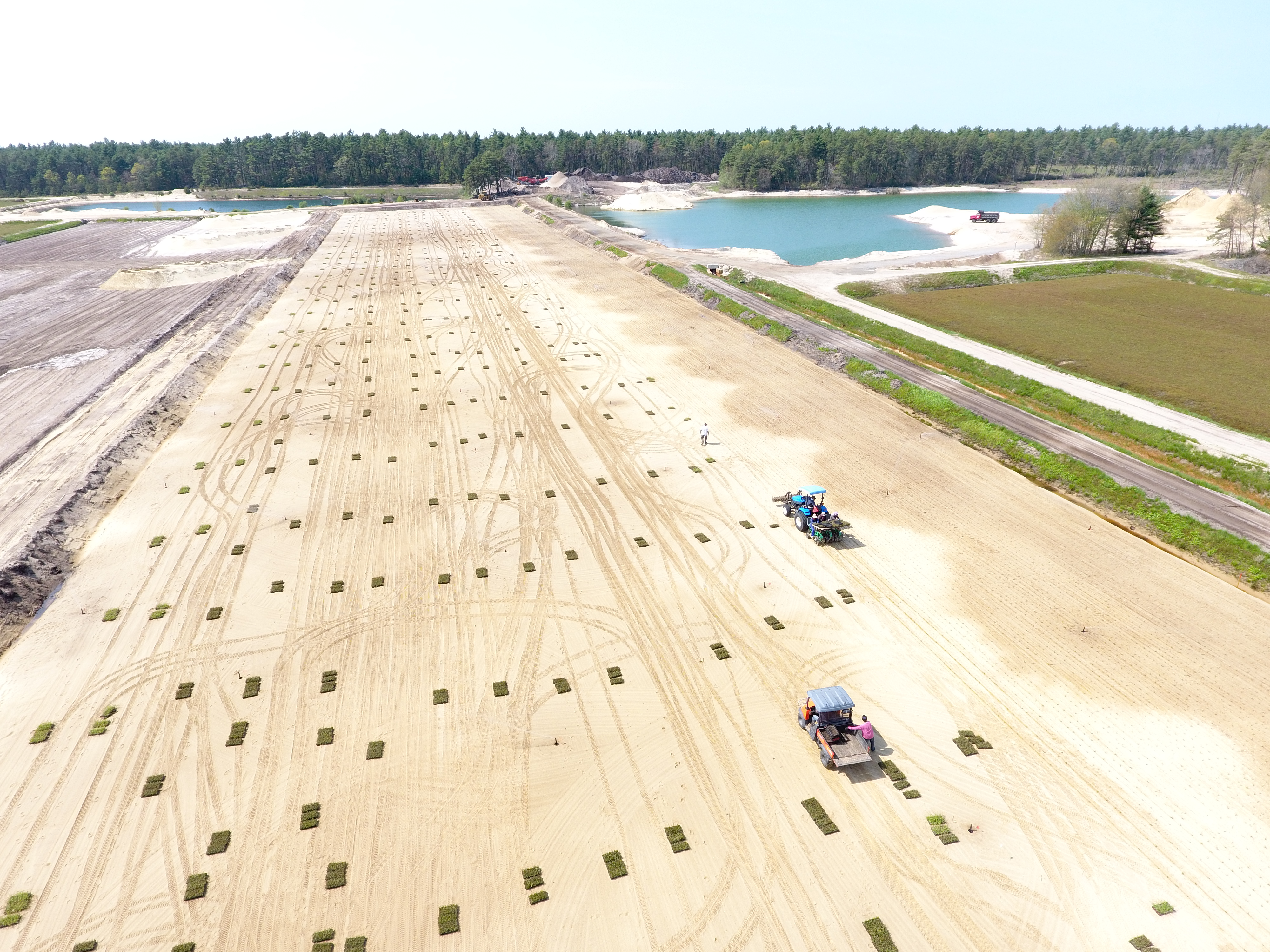Building A Bog
If you’ve been following us for awhile now you’ve heard us mention bog renovation projects and making older bogs more efficient so we decided to tell you more about the process as it is quite interesting.
To build a bog you need the land to do it… and not just any land… land with sand, peat, gravel, and clay. This special combination along with a fresh water source, a growing season from April to September, and a lot of hard work, oh and cranberry vines… is the magic formula to build a cranberry bog. Massachusetts is the perfect place to grow cranberries as it checks all of the boxes.
We’ve been taking older bogs that are not producing well and reshaping and leveling them to be more efficient. Having a flat surface and squared edges will help us harvest more efficiently. New pumps and irrigation are installed which are much more efficient than the older technology. The new irrigation systems are smart and can detect when the soil is dry or wet and waters appropriately. This technology helps us save on water, a precious resource in cranberry farming. Once the new systems are in place the vines can be planted. There are two ways to get cranberry vines, either by purchasing plugs from a greenhouse or pruning vines from another established bog. Planting these vines is a little different from one another, so keep reading and we’ll explain!
If you purchase plugs that were grown in a greenhouse you’re going to need a tractor with a driver and three backward facing workers. These workers have trays of the plugs and they simply fill the tractor with the plugs and it takes the plugs and rotates them down to the ground and plants them. Here’s a picture for reference…

Pretty cool, right?
The other way is to prune vines from another developed cranberry bog in the spring. The pruned vines are run over with a machine that takes the vines and bundles them into small bails. These bails are brought to the new bog and taken apart to spread the vines evenly over the sand. A tractor with spikes then rolls over the vines and pushes them into ground… and that’s it! The vines will reroot and begin to grow.
It is more cost effective to do it the second way but the reason a grower may purchase new vines is to continue to improve quality with new hybrid vines. The hybrid vines are more resilient, the berries will grow to a nice plump size, and will redden a little earlier than older varieties. Continuous improvement is what we strive for and having newer more efficient bogs will help us do that. Check out that view from the sky!




 BACK TO BLOG
BACK TO BLOG

